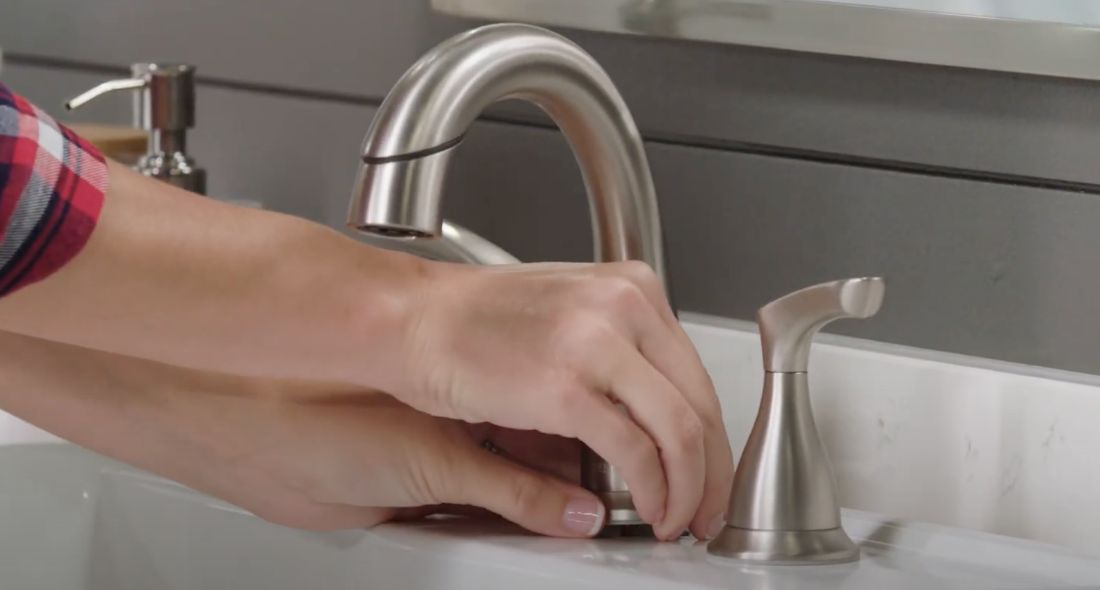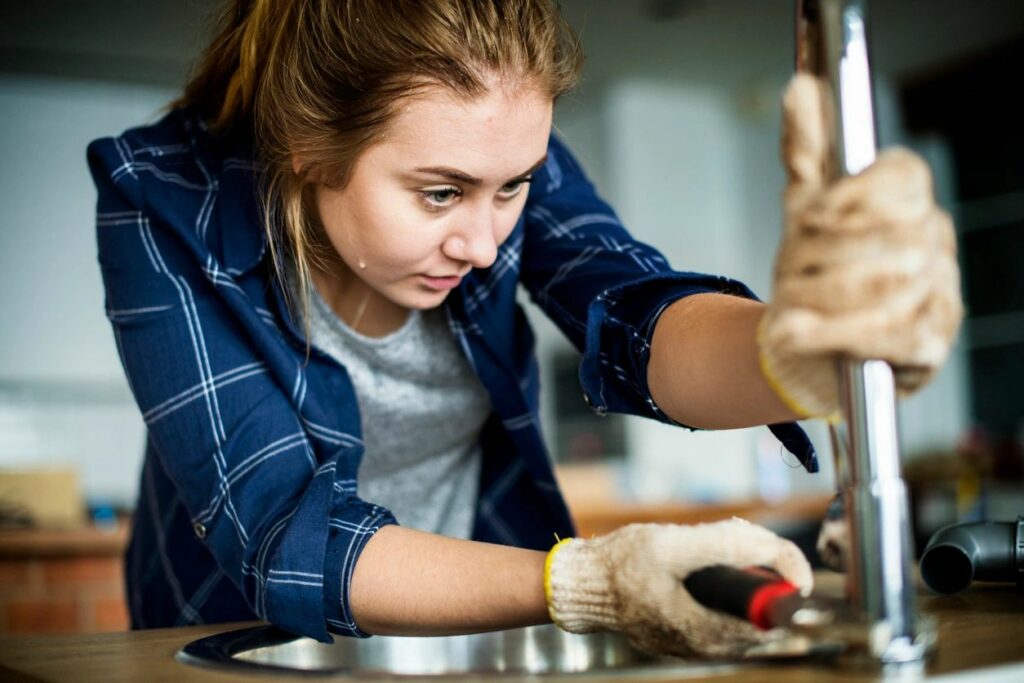What It's Critical to Mend a Broken Faucet
What It's Critical to Mend a Broken Faucet
Blog Article
The content directly below about How to Fix a Dripping or Leaky Faucet is pretty much motivating. You should check this stuff out.

Dripping taps may seem like a small trouble, but their influence exceeds simply the inconvenience of the sound. From drainage to sustaining unneeded economic expenses and wellness dangers, disregarding a trickling tap can cause numerous effects. In this short article, we'll delve into why it's crucial to address this typical home problem promptly and properly.
Wastage of Water
Environmental Effect
Trickling faucets contribute significantly to water wastefulness. According to the Environmental Protection Agency (EPA), a single tap dripping at one drip per secondly can squander greater than 3,000 gallons of water per year. This not only pressures water resources however additionally affects ecological communities and wildlife based on them.
Step-by-Step Guide to Repairing a Dripping Tap
Tools Called for
Before trying to fix a dripping tap, gather the needed tools, consisting of a flexible wrench, screwdrivers, substitute components (such as washers or cartridges), and plumber's tape.
Typical Tap Issues and Their Solutions
Identify the type of faucet and the particular problem creating the drip. Usual problems include damaged washing machines, rusty shutoff seats, or damaged O-rings. Describe maker directions or online tutorials for detailed support on repair work.
Financial Costs
Raised Water Costs
Beyond the ecological effect, leaking faucets can inflate water expenses considerably. The built up wastage gradually translates into higher energy costs, which can have been stayed clear of with timely repair services.
Prospective Building Damages
Additionally, prolonged leaking can result in harm to fixtures and surfaces surrounding the tap. Water build-up can create discoloration, deterioration, and also structural issues if left ignored, resulting in additional repair service prices.
Health Concerns
Mold and Mold Development
The continuous existence of moisture from a trickling tap produces a suitable atmosphere for mold and mold growth. These fungis not only jeopardize indoor air top quality however also posture health and wellness risks, especially for individuals with respiratory system conditions or allergic reactions.
Waterborne Diseases
Stationary water in trickling faucets can become a breeding place for bacteria and other microorganisms, increasing the risk of waterborne illness. Impurities such as Legionella bacteria thrive in stationary water, possibly leading to significant illnesses when ingested or inhaled.
DIY vs. Professional Repair
Advantages and disadvantages of DIY Repair Work
While some may try to deal with a leaking faucet themselves, DIY repairs feature their very own set of obstacles. Without correct understanding and tools, do it yourself efforts can intensify the concern or cause incomplete fixings, extending the problem.
Advantages of Hiring an Expert Plumber
Hiring an expert plumber makes certain that the underlying root cause of the trickling faucet is resolved effectively. Plumbing professionals possess the know-how and equipment to diagnose and repair tap concerns efficiently, saving time and minimizing the risk of more damage.
Environmental Duty
Private Contribution to Conservation
Taking duty for taking care of dripping taps aligns with wider efforts towards water preservation and ecological sustainability. Every individual's actions jointly make a significant effect on protecting precious resources.
Lasting Living Practices
By focusing on timely repairs and taking on water-saving behaviors, individuals contribute to lasting living practices that profit both present and future generations.
Safety nets
Routine Maintenance Tips
To stop dripping taps, carry out regular maintenance such as cleansing aerators, checking for leakages, and replacing damaged parts promptly. Furthermore, take into consideration setting up water-saving tools or updating to much more reliable components.
Significance of Prompt Fixes
Addressing leaking faucets as quickly as they're seen prevents further water wastefulness and possible damages, inevitably conserving both water and cash in the long run.
Impact on Building Worth
Assumption of Well-Maintained Property
Maintaining a residential property in good condition, including dealing with maintenance issues like trickling taps, improves its perceived worth and value among possible purchasers or renters.
Impact on Resale Value
Residences with well-maintained plumbing fixtures, consisting of faucets, command higher resale worths in the realty market. Resolving leaking taps can contribute to a favorable impression throughout residential or commercial property assessments and negotiations.
Final thought
Resolving a dripping tap goes beyond mere comfort; it's an essential step toward saving water, minimizing financial expenses, and safeguarding wellness and home. Whether via DIY repair work or professional assistance, acting to deal with dripping taps is a little yet impactful way to promote responsible stewardship of resources and add to a much healthier, much more lasting future.
How to Fix a Dripping or Leaky Faucet
A leaking faucet is one of the most common problems that homeowners encounter, but it being commonplace doesn’t make it any less annoying. The constant drip drip drip of a leaking bathtub faucet, showerhead, or sink tap can disturb your home’s serenity. Left neglected, a dripping faucet can also result in higher water bills and discoloration or mold growth in your sink or plumbing fixtures.
Fortunately, you don’t have to be a trained plumber to know how to stop a dripping faucet. With some basic tools, replacement parts, and a little patience, leaky faucet repair is a breeze. In this article, we’ll explain what causes dripping faucets and how you can fix them.
What Causes a Leaking Faucet?
Kitchen and bathroom faucets come in all manner of designs, but most involve some combination of valves, O-rings, seals, and washers. The O-ring is usually the weakest link, but any one of these pieces can wear down over time. Heat, moisture, temperature fluctuations, minerals, mold, and movement can contribute to warping and corrosion, breaking the watertight seal. This just comes with the territory of being a homeowner. Everything is always subject to wear and tear, and some component parts of your appliances and fixtures need to be replaced on occasion. At least replacement O-rings are cheap!
More rarely, dripping faucets can be a symptom of excessively high water pressure. Were this the case in your home, you would probably notice that the leak is not isolated to one faucet. Water pressure issues are harder to resolve on your own. We recommend contacting a professional plumber if you suspect your water pressure is too high.
How to Fix a Dripping Faucet
Pipe wrench or monkey wrench Allen wrench set Screwdrivers Old towel or rag Shut off the water.
Before you do anything, you need to turn off the water to keep from drenching your kitchen or bathroom. You should find a valve under the sink and against the wall. Once you’ve turned this valve, try turning the faucet on to confirm that the water source has been cut off.
If you can’t locate your local valve for the faucet you’re working on, you can always shut off the water to the house at the main valve. Of course, this will prohibit anyone from using the sinks, showers, or toilets while you’re working on the faucet that’s giving you trouble.
Plug or block the drain.
You’ll be disassembling the faucet and removing some small bits of hardware. Plug the drain with a stopper or rag to avoid the possibility of a small screw falling into your P-trap.
Take apart the faucet assembly.
There are several varieties of kitchen and bathroom faucets, each with its own manner of assembly. For detailed instructions on how to disassemble your faucet, you can refer to the fixture’s manual or contact the manufacturer. If you know whether you have a ball, disc, cartridge, or compression faucet, you can find detailed schematics online.
In general, you need to begin by removing the faucet handles. You might notice a small screw that you’ll need to remove with a screwdriver or Allen wrench. If you don’t see any visible securing hardware, it’s likely hidden under a decorative cap that can be unscrewed or popped off with flathead screwdriver.
Remove each piece methodically, consulting a schematic when necessary. Take notes or arrange the pieces in such a way to make it easier to correctly reassemble the faucet later.
Remove the cartridge.
Once you’ve removed the handles and securing hardware, you should be able to remove the valve cartridge or stem. Some cartridges will slide right out. Other faucet models will require you to loosen a nut with a pipe wrench before you can remove the valve stem.
Examine the exposed hardware.
With the cartridge or stem removed, inspect the component parts. Check the rubber O-rings for wear and tear. Also examine the seat washer for corrosion or other damage. These pieces are usually the responsible parties for a dripping faucet, but it’s worth inspecting the other component parts while you have the faucet disassembled.
Find replacement parts.
Once you’ve identified which faucet component has failed, find an identical replacement. Your local hardware store should have O-rings, seat washers, and other standard components in stock. If you have a luxury or uncommon faucet, you may have to contact the manufacturer for a replacement part.
It’s a good idea to take your old parts with you to the hardware store so you can compare them with the store’s inventory and be sure you’re purchasing the correct replacement.
Reassemble the faucet.
With your new parts in hand, reconstruct the faucet and handles. Don’t be tempted to overtighten screws or nuts. You might think this could create a better seal, but it can instead damage or bend a delicate part of the assembly and create a new problem for you.
Turn on the water and test the faucet.
The only thing left to do is test your work. Unplug the sink, turn the water back on, and try the faucet. Congratulate yourself on a job well done!
https://www.libertyhomeguard.com/how-to-fix-a-dripping-or-leaky-faucet/

I recently found that content about while doing a lookup on the search engines. Sharing is good. Helping others is fun. I praise you for being here. Kindly come visit our blog back soon.
Report this page